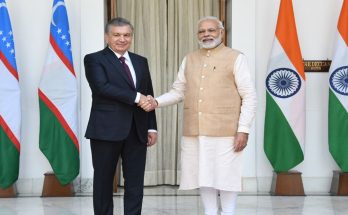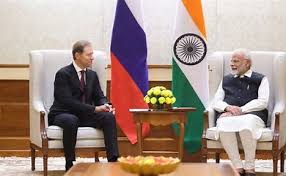 The recent report of the Comptroller and Auditor General (C&AG) on the management of the Army’s stock of ammunition only authenticates what has been known all along. According to the report, the Army’s stock of ammunition kept dwindling between 2008-09 and 2012-13 despite efforts made by the Ministry of Defence (MoD) to arrest the slide.
The recent report of the Comptroller and Auditor General (C&AG) on the management of the Army’s stock of ammunition only authenticates what has been known all along. According to the report, the Army’s stock of ammunition kept dwindling between 2008-09 and 2012-13 despite efforts made by the Ministry of Defence (MoD) to arrest the slide.
Speaking at Nagpur last month, the Defence Minister said that the gap between the prescribed level of the war wastage reserve (WWR) and the available stock had been bridged to the extent of 50 per cent. And he added that the remaining shortage will be made up within the next year and a half.
In December 2014, a representative of the Army had informed the Standing Committee on Defence that there was a major deficiency in the stock of ammunition owing to inadequate capacity of the ordnance factories and the quality of indigenous ammunition as well as inadequate budget support for the ammunition road map (for building up the stock) sanctioned by the ministry in July 2013.
It would be astounding if, between December 2014 when the Standing Committee submitted its report and May 2015 when the minister made his statements, the situation had improved as dramatically as the defence minister’s statement suggests. It would be equally amazing if the deficiency gets wiped out in the next year and a half.
Be that as it may, there is little doubt that the present stock is nowhere near the prescribed level, according to which ammunition held as WWR must be available at any given point of time to sustain 40 days of intense two-front war. There is a need for a reality check.
A roadmap for making up the deficiency by up to 50 per cent of the authorized level by 2019 was approved by the ministry in July 2013 and a five-year indent was placed on the ordnance factory board (OFB). If past experience is anything to go by, it would be a grave error of judgment to be sanguine about production being in sync with this roadmap. For, a similar five-year roll-on indent was placed on the OFB in January 2010 also to supply mutually agreed quantities of various types of ammunition. But the annual budgetary support asked for by the OFB was much less than what it should have been asking for if it had to meet the corresponding production targets.
It is thus apparent that in 2010 the OFB accepted the responsibility it knew it could not discharge. It set up a seven-member committee to recommend measures for augmenting its capacities to meet the target but the committee’s report was never brought before the board.
History seems to be repeating itself. According to budget documents, the value of supplies made by ordnance factories to the Army in 2013-14 decreased by approximately INR 1,000 crore compared with the previous year’s figure. The revised estimates for 2014-15 show that although supplies picked up the final figure may be only marginally higher than the value of supplies made in 2012-13.
The performance of the OFB is critical for building up the stock of ammunition to the desired level. Between 80 to 90 per cent of the ammunition used by the Army is supplied by the ordnance factories. The remaining 10 to 20 per cent comes from other sources, mostly through imports. Repeated failure on the OFB’s part, for whatever reason, lies at the heart of the problem.
The problem is, however, not restricted to the inadequate supply of ammunition by the OFB. Go-ahead sanction was given in July 2013 for the import of ammunition in 17 cases, but as of December 2014 no contract had been signed against any one of them. Of various cases initiated for procurement of ammunition from other local sources, just about 20 per cent resulted in contracts being awarded. There is obviously something drastically wrong with the way procurement cases are being handled.
The C&AG has made several recommendations to tide over the problem. The most important of these is that the MoD should devise a mechanism to fully meet the Army’s requirement by taking into account the OFB’s capacity and the budget availability. MoD could consider the following steps to give effect to the C&AG’s recommendations:
- Appoint an expert group, independent of the OFB/SHQ and even the MoD, to assess the extent up to which the OFB will be able to meet the requirement through the existing capacity and its likely augmentation.
- Appoint an Officer on Special Duty (Ammunition) with the exclusive responsibility of making up the deficiency up to at least 50 per cent of WWR by 2019, and reporting directly to the minister or the minister of state.
- Empower the OSD to source the remaining quantity ex-trade (both Indian and foreign) and to approach the Defence Acquisition Council (DAC) to overcome any procedural hurdle in executing the task given.
- Carry out a review every three months and immediately take corrective action, if required, to make up slippages in achieving the targets.
In the long run, MoD will have to make sure that OFB delivers on its promise and no weapon system is purchased unless an arrangement is made for sustained supply of ammunition, not necessarily through the OFB. This implies involving the private sector in the production of ammunition, with the possible exception of ammunition for small arms. Policy and procedural impediments in purchase from indigenous and foreign sources also need to be removed. And, most importantly, MoD must develop the stomach for bold decision-making while steering procurement cases to their finality.
(Courtesy: IDSA)
Author Profile
- India Writes Network (www.indiawrites.org) is an emerging think tank and a media-publishing company focused on international affairs & the India Story. Centre for Global India Insights is the research arm of India Writes Network. To subscribe to India and the World, write to editor@indiawrites.org. A venture of TGII Media Private Limited, a leading media, publishing and consultancy company, IWN has carved a niche for balanced and exhaustive reporting and analysis of international affairs. Eminent personalities, politicians, diplomats, authors, strategy gurus and news-makers have contributed to India Writes Network, as also “India and the World,” a magazine focused on global affairs.
Latest entries
 DiplomacyOctober 4, 2025UNGA Resolution 2758 Must Not Be Distorted, One-China Principle Brooks No Challenge
DiplomacyOctober 4, 2025UNGA Resolution 2758 Must Not Be Distorted, One-China Principle Brooks No Challenge India and the WorldJuly 26, 2025MPs, diplomats laud Operation Sindoor, call for national unity to combat Pakistan-sponsored terror
India and the WorldJuly 26, 2025MPs, diplomats laud Operation Sindoor, call for national unity to combat Pakistan-sponsored terror India and the WorldJuly 25, 2025When Fire Ends, Diplomacy Begins
India and the WorldJuly 25, 2025When Fire Ends, Diplomacy Begins India and the WorldJuly 16, 2025Operation Sindoor and its Aftermath: India’s Successful Diplomatic Outreach
India and the WorldJuly 16, 2025Operation Sindoor and its Aftermath: India’s Successful Diplomatic Outreach







